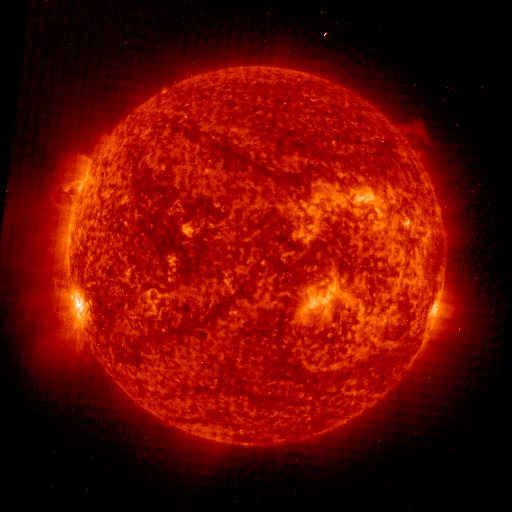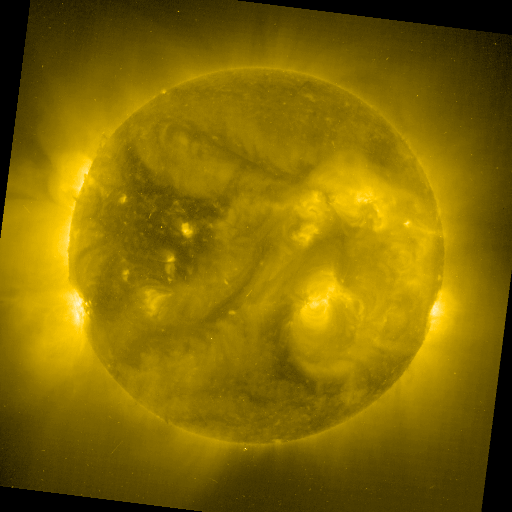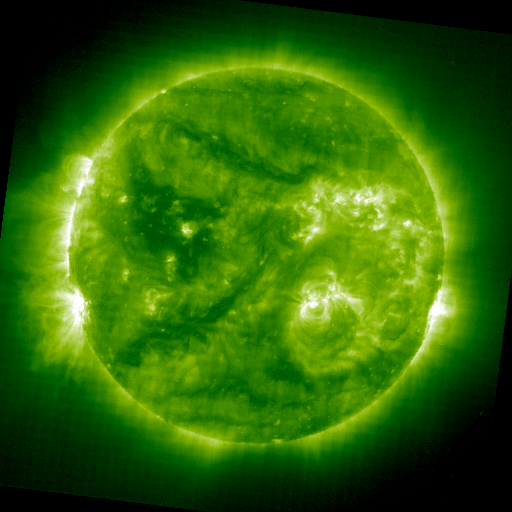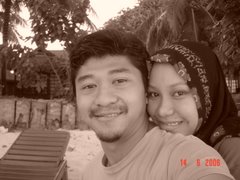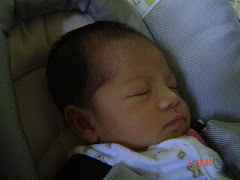Digital DX
These day's Amateur Radio is not only for talking thru a microphone anymore. No Sir, Various modes of communication are available to ham operators.
One such mode of much interest is the Digital mode.
Which Digital mode you ask?,
Well, there again you have a variety of selections and groups involved.
Here is an attempt to explain how simple it is to tune and decode this exciting digital broadcasts and how one can get involved even without having an amateur license. All you need is a radio connected with a computer and some software.
The digital side of amateur radio allows data to be sent over the airwaves.
With your computer, your radio, and appropriate cables, you can hook the two together and communicate to others - No other special hardware necessary, although if desired, it can be optional. There are a number of digital modes that grace the airwaves these days. Some of the modes are intended for the lower HF bands, where communication can be made over longer distances.
Others are intended for local areas, using VHF and/or UHF frequencies, but can be extended over longer distances using digital repeaters, or digipeaters. Some of the digital modes can be done with just your computer and radio - using the computer's sound card to receive and decode the bits of information from audio to data.
All that is needed to use sound card modes is audio cables between your radio and sound card, and a cable hooking up to either the serial or parallel port on your computer to handle the PTT on the radio. You can use plain old cables, or there are a number of companies that make interfaces to simplify hookup - Hook common cables to an interface box, and plug the box into your radio. Some of the interfaces will reduce the audio output a small amount, allowing a clean audio signal to go between the radio and the computer, and vice versa.
Overview Digital Radio Operating Modes:
CW
CW stands for Morse Code. This was the very first digital mode, but the most simple of them all. No computers are needed here, some dont regard this as a digital mode. Designed back the 1840's it uses a series of short and long blips which represent numbers, letters and symbols containing the morse code alphabet.
SSTV
SSTV Stands for Slow Scan TeleVision. The purpose of slow scan is to allow radio hams to send images to each other via the Radio Spectrum. The main useage of SSTV is on HF Bands, where Hams can send images around the world, and recive images from around the world, depending of HF conditions of course
RTTY
or "Radio Teletype" is a FSK mode that has been in use longer than any other digital mode (except for morse code). RTTY is a very simple technique which uses a five-bit code to represent all the letters of the alphabet, the numbers, some punctuation and some control characters. At 45 baud (typically) each bit is 1/45.45 seconds long, or 22 ms and corresponds to a typing speed of 60 WPM. There is no error correction provided in RTTY; noise and interference can have a seriously detrimental effect. Despite it's relative disadvantages, RTTY is still popular with die-hard operators.
PSK 31
is a new and upcoming mode, it is also a fantatsic digital mode for todays cramped bands. PSK31 was designed by Peter G3PLX and is designed to use a small amount of bandwidth. You can fit 6 PSK31 signals in a USB tranmission. This mode can be used as a live tranmission, meaning what ever you type into the machine will be seen on the other side, same as if there is a spelling mistake in there, and the transmitting machine deletes it, it will also be deleted at the recieving end.
PSK31 is the first new digital mode to find popularity on HF bands in many years. It combines the advantages of a simple variable length text code with a narrow bandwidth phase-shift keying (PSK) s
ignal using DSP techniques. This mode is designed for "real time" keyboard operation and at a 31 baud rate is only fast enough to keep up with the typical amateur typist. PSK31 enjoys great popularity on the HF bands today and is presently the standard for live keyboard communications. Most of the ASCII characters are supported. A second version having four (quad) phase shifts (QPSK) is available that provides Forward Error Correction (FEC) at the cost of reduced Signal to Noise ratio.
MFSK16
is an advancement to the THROB mode and encodes 16 tones. The PC sound card for DSP uses Fast Fourier Transform technology to decode the ASCII characters, and Constant Phase Frequency Shift Keying to send the coded signal. Continuous Forward Error Correction (FEC) sends all data twice with an interleaving technique to reduce errors from impulse noise and static crashes. A new improved Varicode is used to increase the efficiency of sending extended ASCII characters, making it possible to transfer short data files between stations under fair to good conditions. The relatively wide bandwidth (316 Hz) for this mode allows faster baud rates (typing is about 42 WPM) and greater immunity to multi path phase shift. This mode is becoming a standard for reliable keyboard to keyboard operation and is available in several popular programs.
MT63
is a new DSP based mode for sending keyboard text over paths that experience fading and interference from other signals. It is accomplished by a complex scheme to encode text in a matrix of 64 tones over time and frequency. This overkill method provides a "cushion" of error correction at the receiving end while still providing a 100 WPM rate. The wide bandwidth (1Khz for the standard method) makes this mode less desirable on crowded ham bands such as 20 meters. A fast PC (166 Mhz or faster) is needed to use all functions of this mode.
TOR
is an acronym for Teleprinting Over Radio. It is traditionally used to describe the three popular "error free" operating modes, AMTOR, PACTOR and G-TOR. The main method for error correction is from a technique called ARQ (automatic repeat request) which is sent by the receiving station to verify any missed data. Since they share the same method of transmission (FSK), they can be economically provided together in one TNC modem and easily operated with any modern radio transceiver. TOR methods that do not use the ARQ hand-shake can be easily operated with readily available software programs for personal computers. For these less complex modes, the TNC (terminal node controller) is replaced by an on-board sound card or out-board audio device. These modes may use redundancy or "human processing" to achieve a level of error correction.
AMTOR
is an FSK mode that has been fading into history. While a robust mode, it only has 5 bits (as did its predecessor RTTY) and can not transfer extended ASCII or any binary data. With a set operating rate of 100 baud, it does not effectively compete with the speed and error correction of more modern ARQ modes. The non-ARQ version of this mode is known as FEC, and known as SITOR-B by the Marine Information services.
PACTOR
is an FSK mode and is a standard on modern TNCs. It is designed with a combination of packet and Amtor Techniques. It is the most popular ARQ digital mode on amateur HF today. This mode is a major advancement over AMTOR, with its 200 baud operating rate, Huffman compression technique and true binary data transfer capability.
PACTOR II
is a robust and powerful PSK mode which operates well under varying conditions. It uses strong logic, automatic frequency tracking; it is DSP based and as much as 8 times faster then Pactor. Both PACTOR and PACTOR-2 use the same protocol handshake, making the modes compatible.
PACTOR-III
is a proprietary mode used for message and traffic handling over an HF radio circuit. Use of Pactor-III protocol is limmitted for US hams and some other countries due to the very wide bandwidth of the Pactor-III signal. Presently digital signals that occupy the bandwidth of PCT-III are restricted to a few sub bands: Only the embedded hardware (modem) from the German company that owns the rights to this mode, is capable of operating Pactor-III.
G-TOR
(Golay -TOR) is an FSK mode that offers a fast transfer rate compared to Pactor. It incorporates a data inter-leaving system that assists in minimizing the effects of atmospheric noise and has the ability to fix garbled data. G-tor tries to perform all transmissions at 300 baud but drops to 200 baud if difficulties are encountered and finally to 100 baud. (The protocol that brought back those good photos of Saturn and Jupiter from the Voyager space shots was devised by M.Golay and now adapted for ham radio use.)
CLOVER
is a PSK mode which provides a full duplex simulation. It is well suited for HF operation (especially under good conditions), however, there are differences between CLOVER modems. The original modem was named CLOVER-I, the latest DSP based modem is named CLOVER-II. Clovers key characteristics are band-width efficiency with high error-corrected data rates. Clover adapts to conditions by constantly monitoring the received signal. Based on this monitoring, Clover determines the best modulation scheme to use.
HF PACKET
is a FSK mode that is an adaption of the very popular Packet radio used on VHF FM ham radio. Although the HF version of Packet Radio has a much reduced bandwidth due to the noise levels associated with HF operation, it maintains the same protocols and ability to "node" many stations on one frequency. Even with the reduced bandwidth (300 baud rate), this mode is unreliable for general HF ham communications and is mainly used to pass routine traffic and data between areas where VHF repeaters maybe lacking.
Hellschreiber
is a method of sending and receiving text using facsimile technology. This mode has been around along time; the recent use of PC sound cards as DSP units has increased the interest in Hellschreiber. The single-tone version (Feld-Hell) is the method of choice for HF operation. It is an on-off keyed system with 122.5 dots/second, or about a 35 WPM text rate, with a narrow bandwidth (about 75 Hz). Text characters are "painted" on the screen, as apposed to being decoded and printed. A new "designer" flavor of this mode called FM HELL has some advantage for providing better quality print, at the expence of a greater duty cycle. As with other "fuzzy modes" it has the advantage of using the "human processor" for error correction.
THROB
is yet another new DSP sound card mode that attempts to use Fast Fourier Transform technology (as used by waterfall displays) to decode a 5 tone signal. The THROB program is an attempt to push DSP into the area where other methods fail because of sensitivity or propagation difficulties and at the same time work at a reasonable speed. The text speed is slower than other modes but the author (G3PPT) has been improving his MFSK (Multiple Frequency Shift Keying) program.
Article taken from
GlobalTuners
Issued by Pascal

